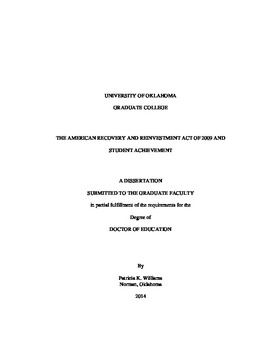| dc.description.abstract | The relationship between school spending and student achievement has been studied for years, beginning in earnest with the Coleman Report (Coleman, Campbell, Hobson, McPartland, Mood, Weinfield, York, 1966). The authors concluded that increased levels of spending in public schools were not sufficient to overcome the educational disadvantages faced by students living in poverty. Coincidentally, during this same time Congress launched the largest federal program aimed at providing educational assistance to poor children – Title I of the Elementary and Secondary Education Act (1965). In the years that followed, program evaluations suggested some evidence of improved student performance related to Title I programs. During this same period school finance researchers sought to better understand the relationship between school spending and student achievement. However, early research was limited by unsophisticated data systems and methodologies, combined with ambiguous guidelines (Borman, 2000, Borman & D’Agostino, 1996). Recent improvements to data systems, combined with increasing expectations of taxpayers for accountability, have led to the fields of production function research and cost effectiveness, which provide important analytical tools to answer these lingering questions.
An exceptional opportunity to study school spending and student achievement was provided when Congress passed the American Recovery and Reinvestment Act (2009). Designed to stimulate the economy and preserve jobs, the bill provided an unprecedented influx of funds for the Title I program. Schools were directed to spend the funds in a manner that would result in improved student achievement, while at the same time saving and creating jobs.
This study addresses whether the additional funds provided through the Title I program under ARRA are associated with improvements in elementary reading scores in an urban school district. A review of the relevant literature results in two research questions. They are:
1. Is there a difference in elementary grade reading test scores before and after Title I ARRA funds were expended?
2. Is there a relationship between specific types of ARRA expenditures and student reading test scores?
It is expected that there is no improvement in student test scores that can be attributed to spending patterns of ARRA Title I funds. However, this study also gives rise to several public policy and school finance questions suitable for additional research. | en_US |
